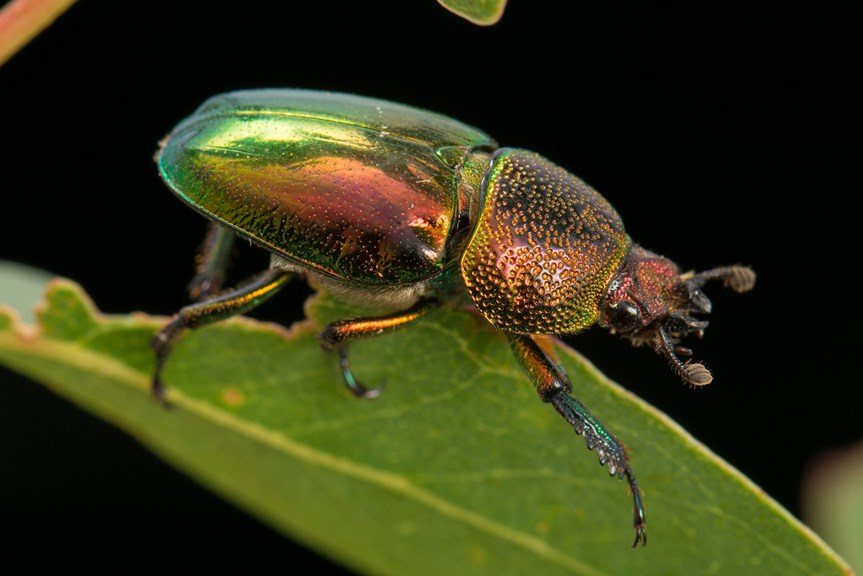Build a Bug!
Suitable for students Kinder–Grade 4
For this activity, we invite you to take a close look at invertebrates, learn about their bodies and construct your own model.
Look at illustrations or photographs of a variety of invertebrates, either in books, the internet, or on the Museums Victoria Field Guide app.
You will also find great images on Museums Victoria Collections website
Choose one to make and, to help you plan, draw a sketch of it. If you don’t find a bug that you like you could build and name a totally imaginary giant bug.
Have a rummage through your recycling bin, look for suitable containers to be your bug’s body (round ones are useful). Other construction materials such as wire, polystyrene and fabrics will be good too. Research, design and build a model of a giant insect or spider, using boxes, cardboard, wire, polystyrene and other materials. You might like to paint it.
Here are some facts that may be useful for you to think about:
- insects have three body segments with three pairs of legs attached to the thorax
- arachnids (spiders and scorpions) have two body segments with four pairs of legs
- legs are made up of a number of segments
- most winged insects have two pairs of wings
- flies and mosquitoes have only one pair of wings
- the fore wings of beetles have evolved into hard wing covers
- there are a variety of antennae types
- many species have a tail, cerci or abdominal sting
Victorian Curriculum Links
Science Levels K–4
F–2: Biological sciences
- Living things have a variety of external features and live in different places where their basic needs, including food, water and shelter, are met (VCSSU042)
Level 3 & 4: Biological sciences
- Living things can be grouped on the basis of observable features and can be distinguished from non-living things (VCSSU057)
- Different living things have different life cycles and depend on each other and the environment to survive (VCSSU058)
Victorian Early Years Learning and Development Framework
| Outcome | Evidence Marker |
|---|---|
| Children have a strong sense of identity | Children develop their emerging autonomy, inter-dependence, resilience and sense of agency |
| Children are connected with, and contribute to, their world | Children become socially responsible and show respect for the environment |
| Children are effective communicators | Children use information and communication technologies to access information, investigate ideas and represent their thinking |
| Children are effective communicator | Children express ideas and make meaning using a range of media |
| Children are confident and involved learners | Children develop dispositions for learning such as curiosity, cooperation, confidence, creativity, commitment enthusiasm, persistence, imagination and reflexivity |
| Children are confident and involved learners | Children develop a range of skills and processes such as problem solving, inquiry, experimentation, hypothesising, researching and investigating |
| Children are confident and involved learners | Children transfer and adapt what they have learnt from one context to another |
| Children are confident and involved learners | Children resource their own learning through connecting with people, place, technologies and natural and processed materials |
